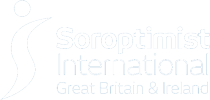We often hear the phrase “Safeguarding is everyone’s responsibility.” Regional Safeguarding Lead Jenny Murphy of Sutton Coldfield Club tells us why a robust process is essential for every club, and reminds us that Safeguarding is the action that is taken to promote the welfare of children and adults at risk and protect them from harm.

Safeguarding is the action that is taken to promote the welfare of children and adults at risk and protect them from harm. Safeguarding is everyone’s responsibility.
Safeguarding is also a Health and Safety Issue
Safeguarding and health and safety are two distinct concepts; however, they important roles in protecting children, young people and adults.
Safeguarding is the action taken to promote the welfare of children and adults at risk to protect them from harm. It’s not just about children. Health and safety refer to the measures taken to ensure the safety, health, and welfare of people. It includes the prevention of accidents and injuries, the protection of volunteer work-related risks, and the promotion of healthy working conditions.
Child Safeguarding means (NSPCC):
- protecting children from abuse and maltreatment
- preventing harm to children’s health or development
- ensuring children grow up with the provision of safe and effective care
- taking action to enable all children and young people to have the best outcomes
Adult Safeguarding means (The Care Act 2014)
- protecting an adult’s right to live in safety, free from abuse and neglect
- It is about people and organisations working together to prevent and stop both the risks and experience of abuse or neglect, while at the same time making sure that the adult’s wellbeing is promoted including, where appropriate, having regard to their views, wishes, feelings and beliefs in deciding on any action
Who can be classed as vulnerable?
- children below the age of 18 and up to the age of 25 for young people with high needs
- adults ‘at risk’ are any person aged 18 or over at risk of abuse or neglect because they are ‘adults with a care and support need’, and/or who cannot protect themselves from abuse
Who is at increased risk of abuse?
- Children and those young people with a learning disability/disability
- People dependant on others for assistance, especially with finances and personal care.
- People who lack the capacity to consent.
- People who need support with communication.
- People who need support with mobility.
- People who are isolated.
- People receiving care in their own homes.
- People that may experience discrimination (e.g. hate crime).
Categories of Abuse – Children and Adults
- Physical
- Sexual
- Neglect
- Emotional
Categories of adult abuse include the four above plus the following:
- Self-Neglect & Hoarding
- Modern Slavery
- Psychological Domestic abuse
- Neglect/Acts of Omission
- Financial/Material
- Discriminatory
- Organisational
Other Safeguarding Issues – children and adults:
- Grooming
- e-safety
- Sexting
- Missing Children
- Sexual Exploitation
- Radicalisation
- Private Fostering
- Domestic Abuse
- Forced Marriage
- Honour Based Abuse
- Female Genital Mutilation
- Gangs and Criminal Exploitation
- County Lines
- Scams
- Trafficking
- Mate Crime
- Hate Crime
Useful Tips
Have a lead safeguarding contact for your club that you can go to for support. They will deal with any referral that needs to be made for any safeguarding issues. If in doubt about whether you have come across a safeguarding issue talk to the safeguarding lead for the region.
Prioritise: Continue to prioritise safeguarding throughout your club and where it is necessary to adjust your practice due any ‘Programme Action’ requests for volunteers. Please think about ways you can be pragmatic and safe at the same time.
Add safeguarding to all business/executive and regional agendas.
Look at SIGBI safeguarding policy/procedure.
Watch the 3-minute SIGBI safeguarding video available on YouTube here.
Contact the Regional Safeguarding Lead (Jenny Murphy) for some specific safeguarding awareness.
Ensure that you complete appropriate forms for taking photographs and videos of people who are not club members.
Ensure that risk assessment forms are completed for activities, public events, including Program Action
Avoid lone working wherever and whenever possible, always make sure that you work in at least teams of two and everyone knows who in the organisation they need to tell if they have a concern.
Be aware of SIGBI Code of Conduct for your club and follow that.
Be aware of scams: Times of distress and disruption are a magnet for scammers, and sadly right now is no different. Please stay vigilant, if it feels too good to be true, it probably is. If you think you, or someone you know, have been targeted by a rogue trader or scam, you can report it to Trading Standards.
The six principles of safeguarding:
- Empowerment: People should be supported and encouraged to make their own decisions.
- Prevention: It is better to act before harm occurs.
- Proportionality: The least intrusive response appropriate to the risk presented.
- Protection: Support and representation for those in greatest need.
- Partnership: Members have a part to play in preventing, detecting and reporting neglect and abuse.
- Accountability: Accountability and transparency are fundamental in safeguarding practice.
The 5 Ds (Suzy Lamplugh Trust)
If you do come across a possible safeguarding issue, follow the 5 Ds : Always assess your own safety before intervening then consider…
- Distract – to de-escalate the situation
- Delegate – inform someone for example a security guard
- Document – write down, video, note landmarks, date and time
- Delay – Do you need anything? Make eye contact
- Direct – Speak up – can I get help?
Safeguarding is everyone’s responsibility and it’s not only about children. For further advice or information please contact me.

